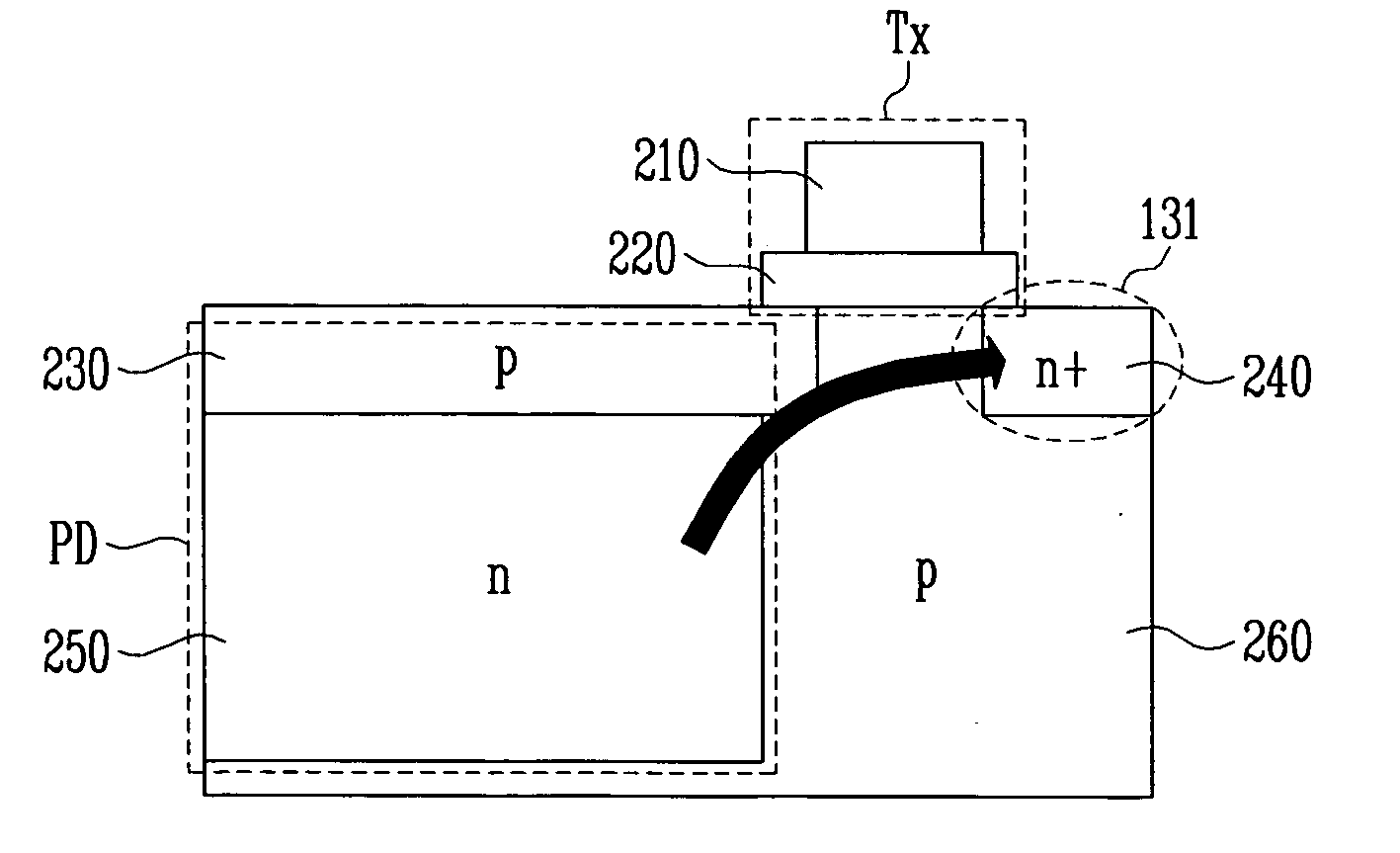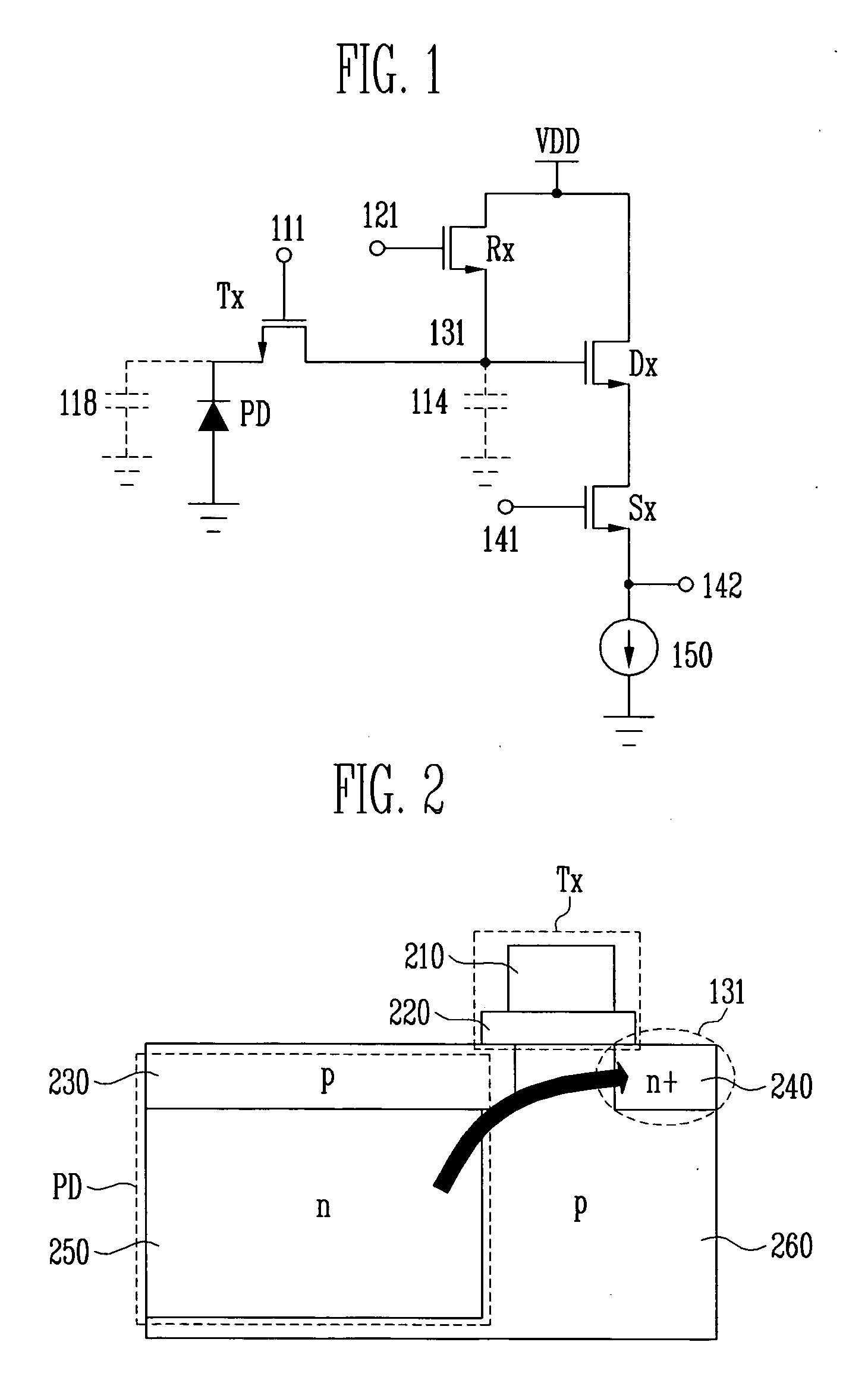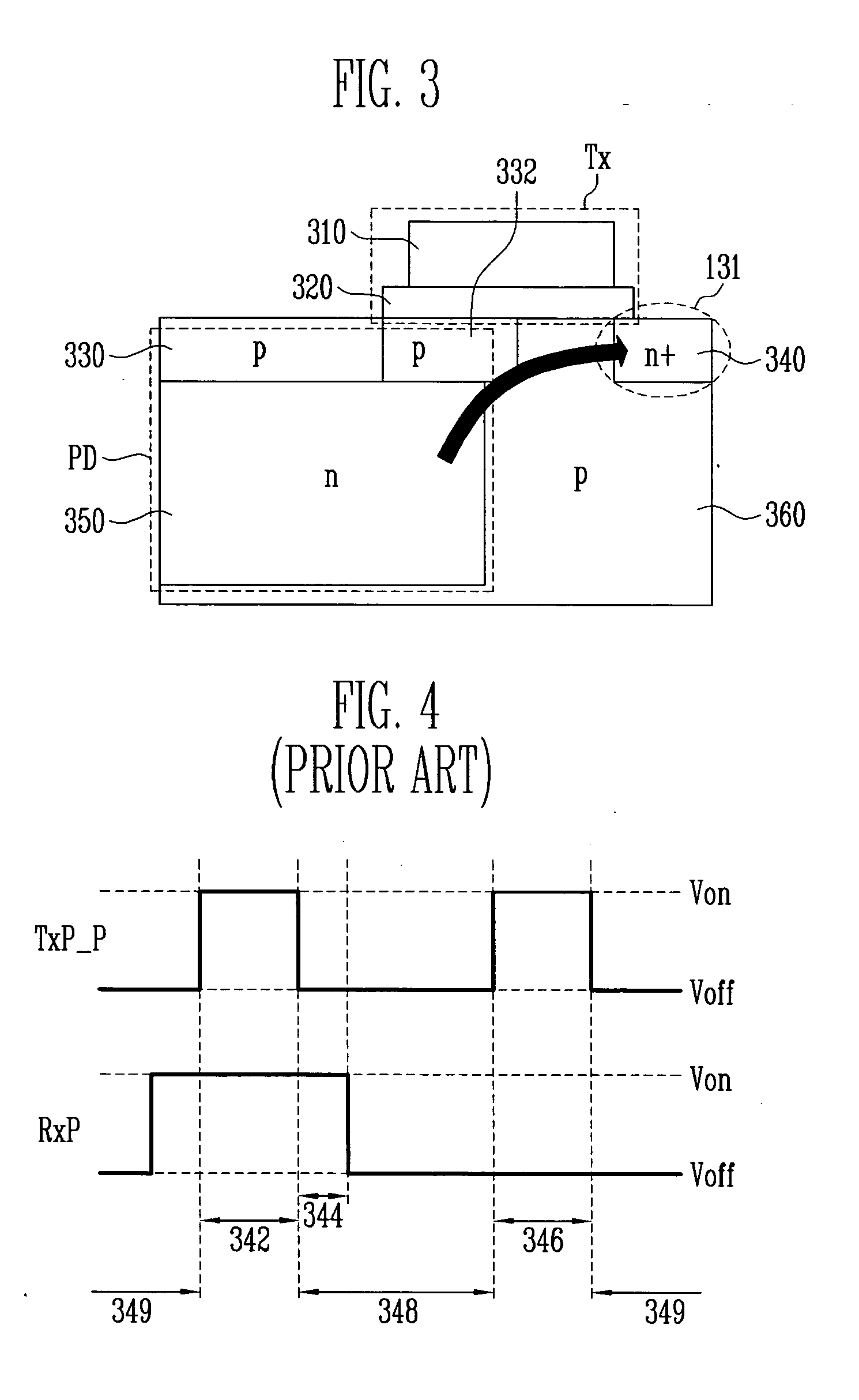Image sensor and method of driving transfer transistor of image sensor
a technology of image sensor and transfer transistor, which is applied in the direction of radio frequency control devices, instruments, television systems, etc., can solve the problems of increasing dark current, deteriorating image quality, and increasing fixed pattern noise, so as to reduce noise and dark current
- Summary
- Abstract
- Description
- Claims
- Application Information
AI Technical Summary
Benefits of technology
Problems solved by technology
Method used
Image
Examples
first exemplary embodiment
[0048] An image sensor of this embodiment includes: a photodiode; a photosensitive pixel including a transfer transistor for transferring photon-induced charges created in the photodiode to a floating diffusion node; and a voltage control unit for applying a switching signal having a pseudo pinch-off voltage lower than the power supply voltage or a rising time that is two times or greater than the minimum rising time, to the gate of the transfer transistor during a partial or entire section of a turn-on section of the transfer transistor. Preferably, the pseudo pinch-off voltage ranges from a value several hundreds of mV lower than the power supply voltage to a half the power supply voltage.
[0049] In the case where this embodiment is implemented by a CMOS image sensor, it may be applied to the 4-transistor pixel structure shown in FIG. 1. Once a pseudo pinch-off voltage value to be generated by a voltage control unit is determined, the control unit may be implemented using a variet...
second exemplary embodiment
[0072] An image sensor of this embodiment includes a transfer transistor for transferring photon-induced charges created in the photodiode to a floating diffusion node, and a reset transistor for resetting the floating diffusion node, in which, a voltage applied to a drain and / or gate of the reset transistor is changed to control the channel voltage of the transfer transistor to be lower than the floating diffusion node voltage so that the transfer transistor operates in a pseudo pinch-off mode.
[0073] Here, the turn-on voltage of the transfer transistor may be a power supply voltage. Preferably, the voltage applied to the drain and / or gate of the reset transistor may range from a value several hundreds of mV higher than the power supply voltage to a value 1.5 times higher than the power supply voltage.
[0074] When this embodiment is implemented by a CMOS image sensor, it may be applied to the 4-transistor pixel structure shown in FIG. 1. It can be seen that even in the image sensor...
third exemplary embodiment
[0080]FIG. 3 shows a structure of a photodiode and a transfer transistor of a CMOS image sensor having an enhanced structure to which a method of driving a transfer transistor according to this exemplary embodiment may be applied. In this embodiment, a switching signal applied to the gate of the transfer transistor includes a turn-on voltage that is enhanced as in the first embodiment, and a turn-off voltage that is a lower negative offset voltage than a ground voltage in order to optimize the performance of the image sensor.
[0081] A method of applying a pseudo pinch-off voltage and the resulting effect are the same as in the first embodiment, and thus the enhanced structure of the transfer transistor, a method of applying a negative offset voltage, and the resulting effect will be described herein.
[0082] Only the photodiode PD, the transfer transistor Tx, and the floating diffusion region 131 of the 4-transistor pixel are shown in FIG. 3. The transfer transistor Tx includes a gat...
PUM
 Login to View More
Login to View More Abstract
Description
Claims
Application Information
 Login to View More
Login to View More - R&D
- Intellectual Property
- Life Sciences
- Materials
- Tech Scout
- Unparalleled Data Quality
- Higher Quality Content
- 60% Fewer Hallucinations
Browse by: Latest US Patents, China's latest patents, Technical Efficacy Thesaurus, Application Domain, Technology Topic, Popular Technical Reports.
© 2025 PatSnap. All rights reserved.Legal|Privacy policy|Modern Slavery Act Transparency Statement|Sitemap|About US| Contact US: help@patsnap.com



